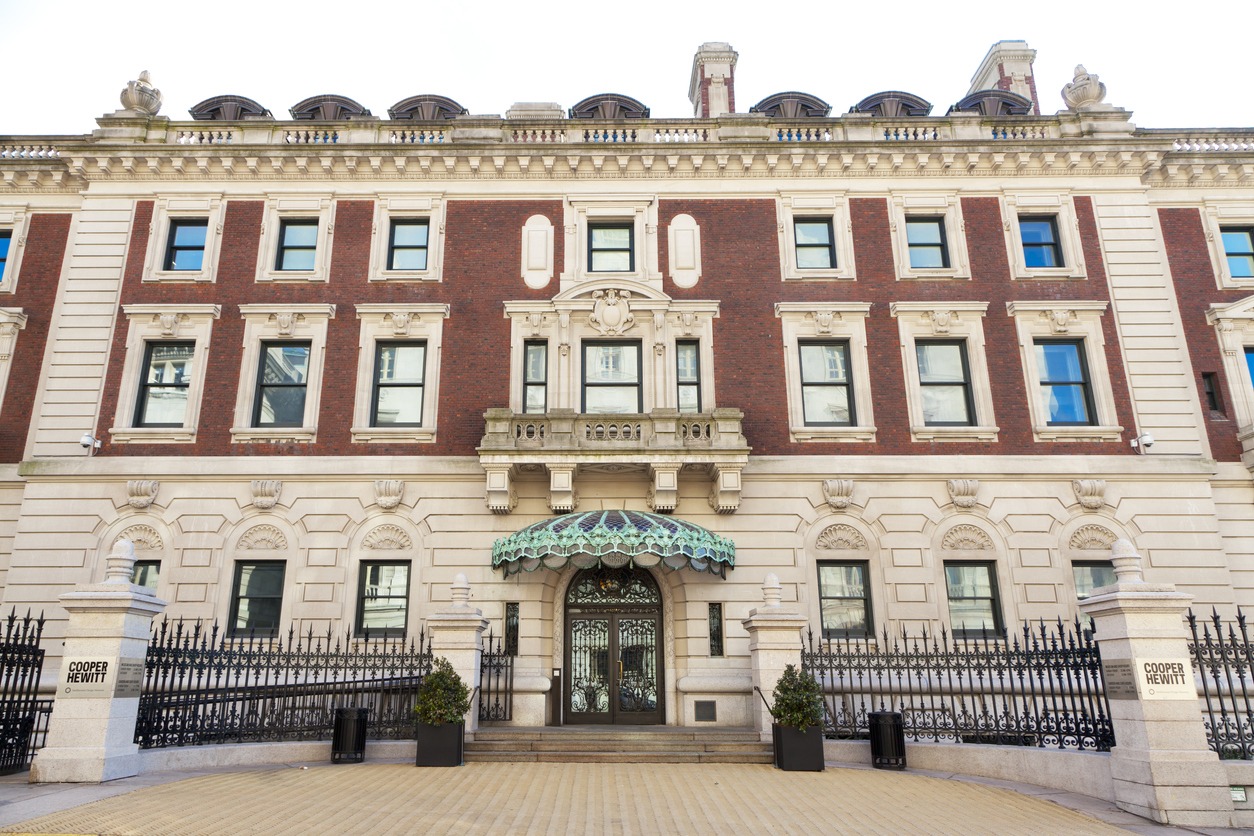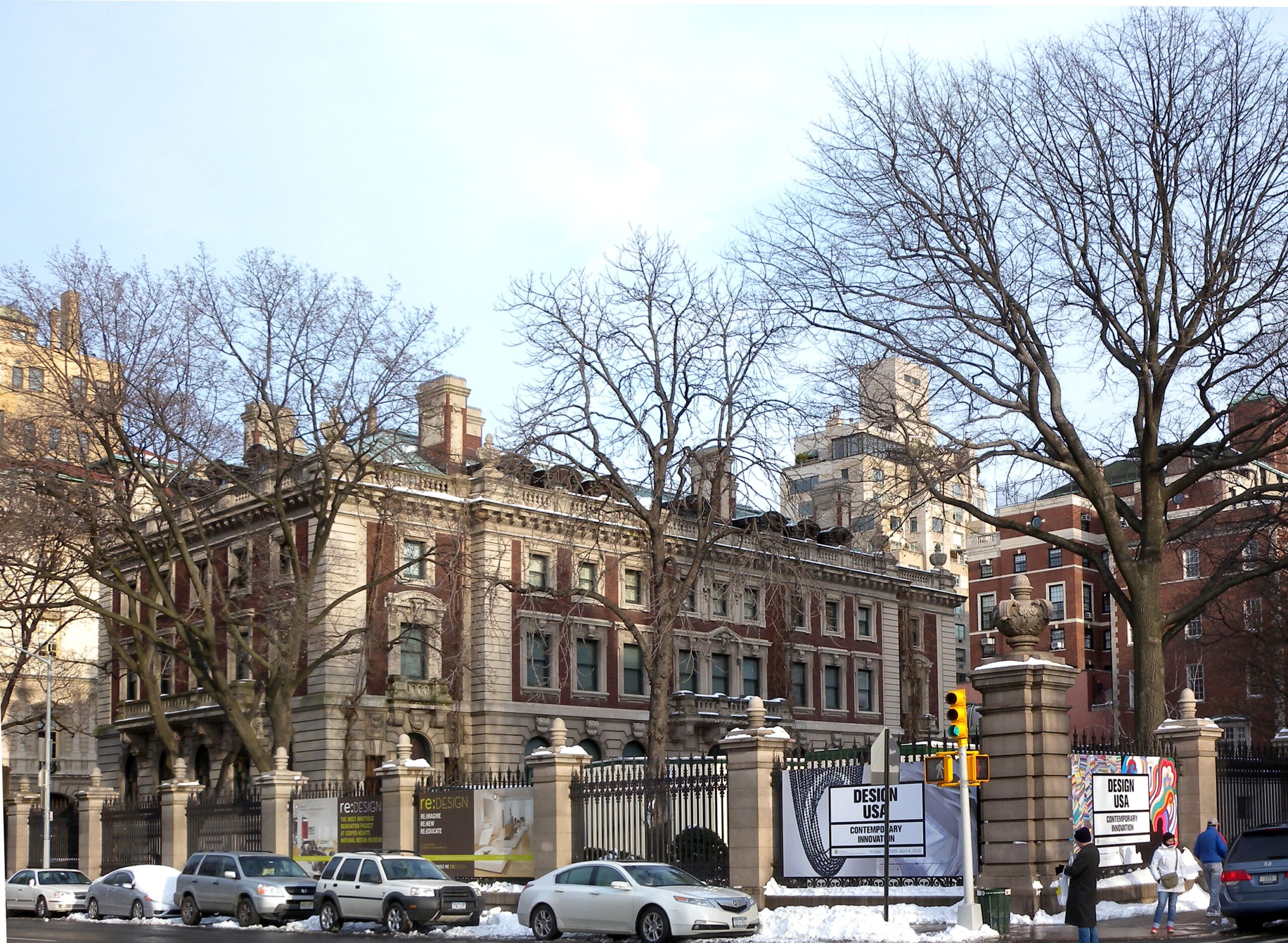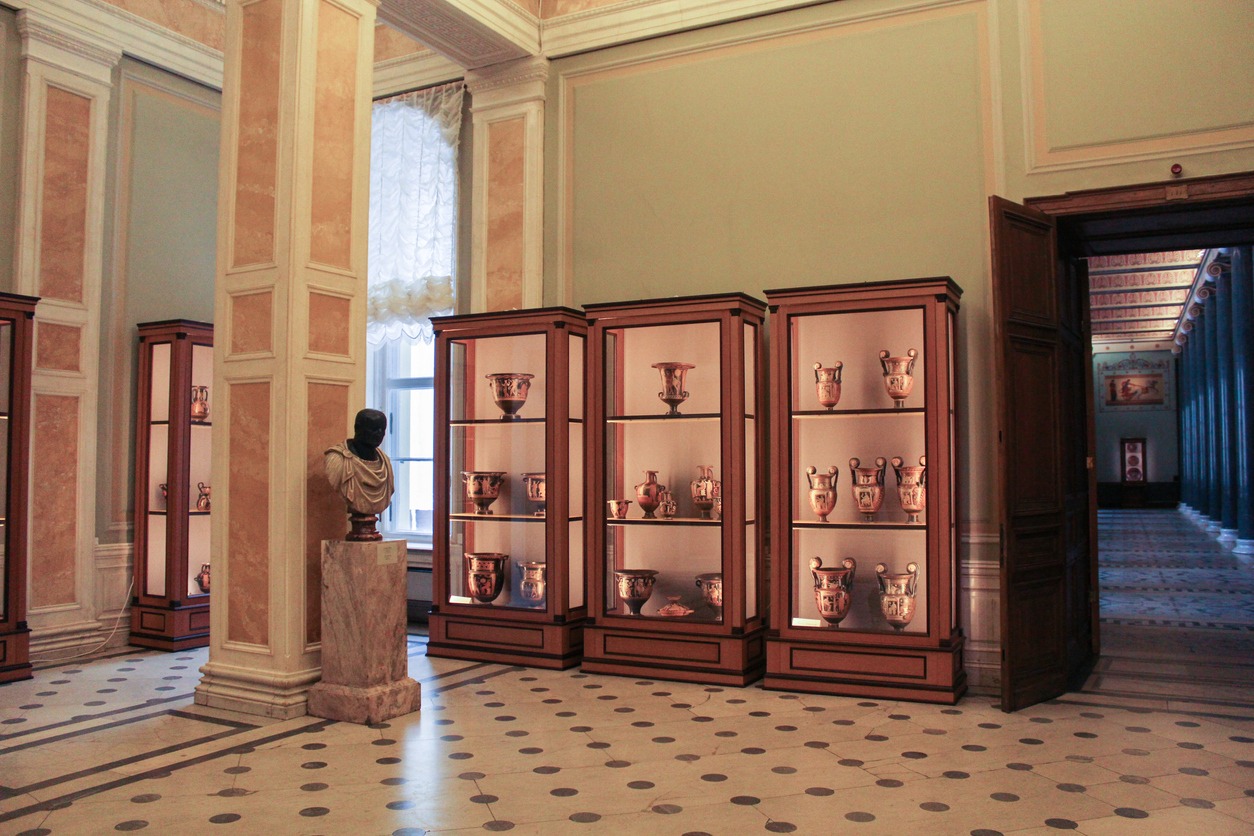Design is a ubiquitous aspect of our lives, influencing everything from the architecture of our buildings to the technology in our pockets. The Cooper Hewitt, Smithsonian Design Museum, located in the heart of New York City, stands as a testament to the power and significance of design. With a rich history spanning over a century, this institution has established itself as a premier destination for those interested in exploring the world of historic and contemporary design. In this article, we will delve into the history of the Cooper Hewitt, its mission, collections, exhibitions, and the vital role it plays in promoting the appreciation and understanding of design.
A Brief Overview of the Cooper Hewitt
The Cooper Hewitt, Smithsonian Design Museum, is one of the 19 museums and galleries that make up the Smithsonian Institution, the world’s largest museum, education, and research complex. Located on the historic Museum Mile of New York City’s Fifth Avenue, it occupies the beautifully restored Carnegie Mansion, a structure with its own rich history.
The museum’s roots can be traced back to the early 20th century when sisters Sarah and Eleanor Hewitt established the Cooper Union Museum for the Arts of Decoration in 1897. The Cooper Union, a renowned institution dedicated to the advancement of art and science, provided the perfect platform for the Hewitt sisters to develop their vision of a museum focused on design.
Over time, the institution evolved and grew in prominence, expanding its collection and reach. In 1967, the Cooper Union transferred the museum’s assets to the Smithsonian Institution, leading to the creation of the Cooper-Hewitt Museum. The museum underwent a significant transformation in the early 21st century, with a massive renovation led by acclaimed design firm Diller Scofidio + Renfro. In 2014, it officially became the Cooper Hewitt, Smithsonian Design Museum, embracing a new era in design appreciation and scholarship.
The Mission and Vision of Cooper Hewitt
The Cooper Hewitt, Smithsonian Design Museum’s mission is to educate, inspire, and empower people through design. At the heart of this mission is a commitment to showcasing the power of design to make a positive impact on the world. The museum aims to explore the design process, celebrate designers, and encourage creativity and innovation among visitors of all ages.
One of the fundamental aspects of Cooper Hewitt’s mission is its dedication to historic and contemporary design. By presenting a diverse range of design objects and artifacts, the museum provides visitors with a unique opportunity to witness the evolution of design throughout history and its relevance in the present day.
The museum’s vision is to become the global leader in advancing the public’s understanding and appreciation of design. Through its exhibitions, collections, educational programs, and digital initiatives, it seeks to inspire creative thinking and foster a deeper understanding of the impact of design on our lives.
Carnegie Mansion
The Carnegie Mansion, also known as the Andrew Carnegie Mansion, is a historic and iconic building that serves as the main exhibition space for the Cooper Hewitt, Smithsonian Design Museum in New York City. Located at 2 East 91st Street at Fifth Avenue, on the Upper East Side of Manhattan, the mansion boasts a prime location overlooking Central Park. Designed in the Georgian Revival architectural style by the renowned New York firm Babb, Cook & Willard, the mansion features a classical façade with limestone and red brick, complemented by elegant wrought-iron gates and a prominent central staircase. Construction began in 1899 and was completed in 1902, commissioned by Andrew Carnegie, a prominent Scottish-American industrialist, philanthropist, and steel magnate.
Originally serving as the luxurious residence for the Carnegie family, the mansion is a testament to their wealth and social status, with 64 rooms, including a grand ballroom, a picture gallery, a library, and a music room, all designed to showcase their extensive art collection. The Beaux-Arts interior, characterized by lavish ornamentation and classical motifs, is a masterpiece of Gilded Age design. In 1972, Andrew Carnegie’s daughter, Margaret Carnegie Miller, donated the mansion to the Smithsonian Institution, with the stipulation that it house the Cooper-Hewitt Museum of Decorative Arts and Design, now known as the Cooper Hewitt, Smithsonian Design Museum.
To adapt the mansion for its new role as a museum while preserving its historical and architectural significance, significant renovations and restoration work took place during the 1970s and 1980s. Today, the Carnegie Mansion is open to the public, welcoming visitors to explore both the extensive design collection of the Cooper Hewitt Museum and the architectural splendor of the mansion itself. This historic building stands as a symbol of Gilded Age opulence and has been repurposed as a center for the celebration and exploration of design, making it a unique and culturally significant landmark in New York City.
Collections
At the heart of the Cooper Hewitt experience are its extensive and diverse collections, which span over 240 years of design history. These collections are a testament to the museum’s commitment to preserving and showcasing the best examples of design in various forms. The museum’s collections are divided into several categories, each offering a unique perspective on design.
- Textiles: The Cooper Hewitt boasts an exceptional collection of textiles, including textiles from various cultures and time periods. These textiles are not only beautiful but also offer valuable insights into the techniques and craftsmanship of different eras.
- Drawings and Sketches: Design often begins with an idea on paper, and the museum’s collection of drawings and sketches showcases the creative process behind some of the most iconic designs in history. From architectural plans to fashion sketches, these items provide a glimpse into the minds of designers.
- Decorative Arts: The decorative arts collection includes a wide range of objects, from furniture to ceramics to glassware. These objects reflect the changing tastes and styles of different time periods and cultures.
- Wallcoverings: Wallcoverings have played a crucial role in interior design for centuries, and the museum’s collection includes a rich array of wallpapers and other wall coverings that have adorned homes and buildings throughout history.
- Product Design: In a world filled with products, the museum’s product design collection showcases the best examples of functional design, from household appliances to transportation vehicles.
- Graphic Design: Graphic design has a profound impact on our daily lives, and the Cooper Hewitt’s collection of posters, advertisements, and other graphic materials highlights the power of visual communication.
- Digital Design: As technology has advanced, so too has the field of digital design. The museum’s collection of digital design artifacts demonstrates how design has adapted to the digital age.
- Fashion: Fashion is a form of design that is intimately connected to personal expression and cultural trends. The museum’s fashion collection includes garments, accessories, and textiles that tell the story of fashion’s evolution.
Each of these collections is a treasure trove of design history, offering visitors the opportunity to explore the creativity, innovation, and cultural significance of design across time and place. Whether you are interested in the intricacies of textile design or the sleek lines of modern product design, the Cooper Hewitt has something to offer.
Exhibitions
In addition to its permanent collections, the Cooper Hewitt regularly hosts a wide range of exhibitions that provide visitors with a deeper understanding of various aspects of design. These exhibitions are carefully curated to showcase both historic and contemporary design, offering a dynamic and ever-changing landscape of design exploration.
- Permanent Collection Displays: The museum’s permanent collection is not static; instead, it is regularly refreshed to highlight different aspects of design. These displays often feature thematic groupings of objects that invite visitors to make connections across time and culture.
- Special Exhibitions: Special exhibitions at the Cooper Hewitt delve into specific design themes, movements, or designers. These exhibitions provide a deep dive into various facets of design, from the work of individual designers to broader topics like sustainability and innovation.
- Design Triennials: The museum’s triennial exhibitions are a highlight of its programming, bringing together a diverse range of designers and design objects from around the world. These exhibitions showcase the cutting edge of contemporary design and offer a glimpse into the future of the field.
- Cooper Hewitt Labs: As part of its commitment to innovation and digital design, the museum hosts Cooper Hewitt Labs, which are experimental spaces where visitors can interact with digital design tools and experiences. These labs explore the intersection of design, technology, and creativity.
- Virtual Exhibitions: In an increasingly digital world, the Cooper Hewitt has embraced virtual exhibitions, allowing people from around the globe to explore design collections and exhibitions from the comfort of their own homes.
Through its diverse and dynamic exhibition programming, the Cooper Hewitt provides visitors with a unique opportunity to engage with design in a meaningful way. Whether you are a design enthusiast or a casual visitor, the museum’s exhibitions offer a chance to see, learn, and be inspired by the world of design.
Education and Outreach: Fostering Design Appreciation
One of the core pillars of the Cooper Hewitt’s mission is education and outreach. The museum is dedicated to fostering design appreciation and creativity among people of all ages and backgrounds. To achieve this goal, it offers a wide range of educational programs and resources.
- Educational Programs: The museum hosts a variety of educational programs, including workshops, lectures, and design camps. These programs are designed to engage participants in hands-on design activities and encourage them to think critically about the role of design in their lives.
- School and Youth Programs: The Cooper Hewitt works closely with schools and youth organizations to provide design education opportunities for young people. These programs aim to inspire the next generation of designers and creative thinkers.
- Professional Development: The museum offers professional development opportunities for educators, helping them incorporate design thinking and creativity into their teaching practices.
- Online Resources: In an effort to reach a wider audience, the Cooper Hewitt provides a wealth of online resources, including lesson plans, design challenges, and virtual exhibitions. These resources are accessible to educators, students, and anyone interested in design.
- Accessibility Initiatives: The museum is committed to making design accessible to all, and it actively works to improve physical and digital accessibility for visitors with disabilities.
By offering these educational programs and resources, the Cooper Hewitt strives to make design a more inclusive and approachable field, breaking down barriers and inspiring creativity in people from all walks of life.
The Role of Design in Society
Design is not merely a matter of aesthetics; it plays a fundamental role in shaping our world and our experiences within it. The Cooper Hewitt, Smithsonian Design Museum recognizes this and seeks to highlight the profound impact of design on society in various ways.
- Design for Social Impact: Many designers today are dedicated to creating solutions that address pressing social and environmental challenges. The museum showcases the work of designers who are using their creativity and innovation to make a positive impact on the world.
- Sustainability and Design: With environmental concerns at the forefront of global issues, the Cooper Hewitt explores the intersection of sustainability and design. Exhibitions and programs often highlight eco-friendly design practices and materials.
- Innovation and Technology: The museum recognizes that design is closely intertwined with technological advancements. It showcases how design has shaped and been shaped by innovations in fields like artificial intelligence, 3D printing, and more.
- Cultural Expression: Design is an important form of cultural expression, reflecting the values, beliefs, and identity of different societies. The Cooper Hewitt’s collections and exhibitions often explore how design is used to convey cultural meaning.
- Design and Well-being: Design can enhance the well-being of individuals and communities. The museum explores how design impacts areas such as healthcare, urban planning, and accessibility, highlighting designs that improve people’s lives.
In a rapidly changing world, the Cooper Hewitt serves as a vital platform for exploring the ways in which design shapes our past, present, and future. It encourages visitors to consider the ethical and social implications of design decisions and to envision a more inclusive and sustainable world through design.
Conclusion
The Cooper Hewitt, Smithsonian Design Museum stands as a beacon of design appreciation and education in the heart of New York City. With its rich history, diverse collections, engaging exhibitions, and commitment to education, it is a destination for design enthusiasts, students, professionals, and anyone curious about the world of design.
Through its mission to educate, inspire, and empower people through design, the museum fosters a deeper understanding of design’s impact on society, culture, and the individual. It celebrates both historic and contemporary design, showcasing the evolution of the field and its enduring relevance in our lives.
In an increasingly complex and interconnected world, the role of design has never been more significant. The Cooper Hewitt, Smithsonian Design Museum invites us to explore the past, engage with the present, and imagine the future through the lens of design. As we navigate the challenges and opportunities of the 21st century, the museum’s dedication to design excellence and innovation continues to shine brightly, inspiring us all to see the world through a designer’s eye and to appreciate the beauty and power of design in our lives.



